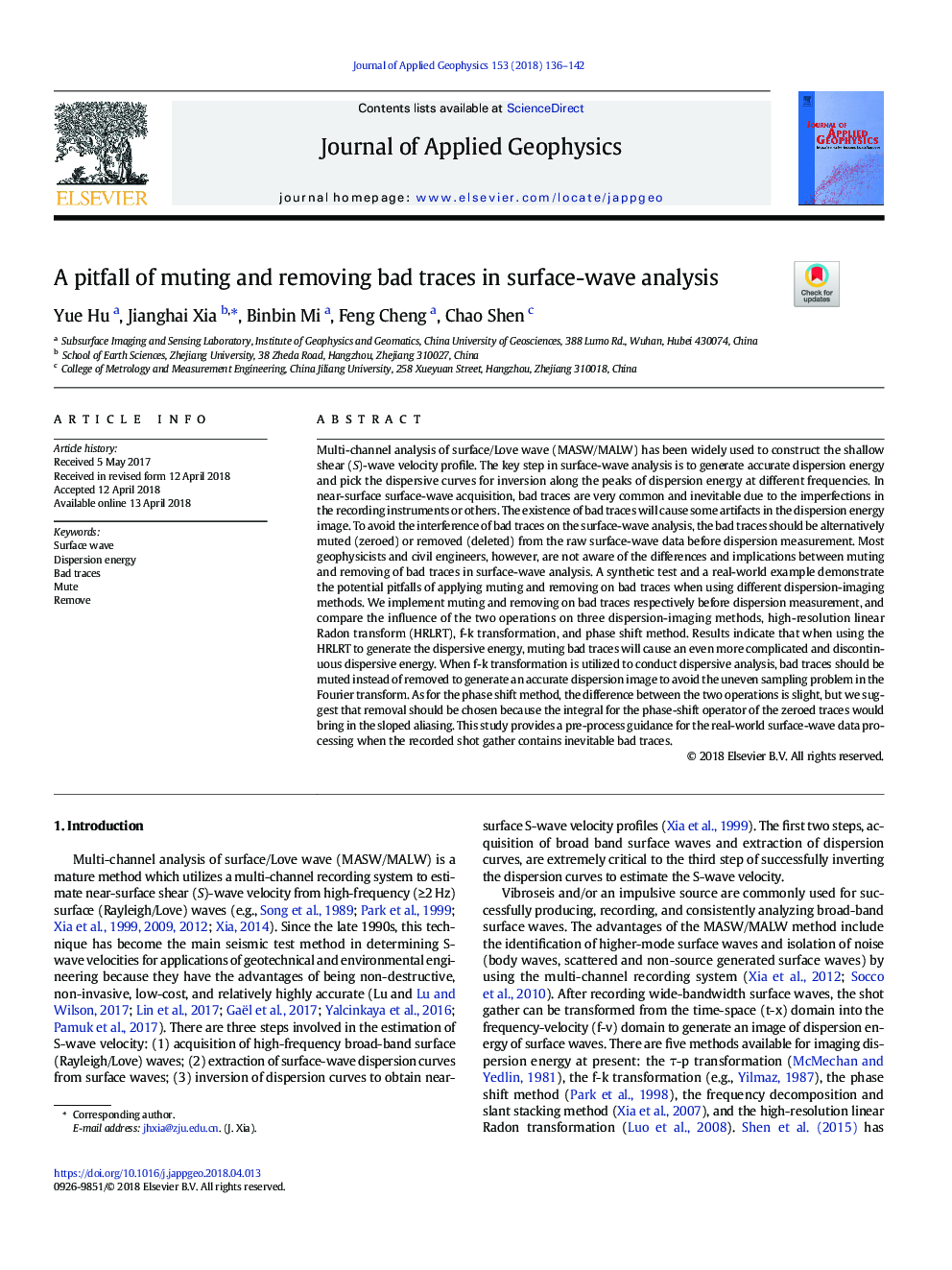| کد مقاله | کد نشریه | سال انتشار | مقاله انگلیسی | نسخه تمام متن |
|---|---|---|---|---|
| 8915392 | 1641098 | 2018 | 7 صفحه PDF | دانلود رایگان |
عنوان انگلیسی مقاله ISI
A pitfall of muting and removing bad traces in surface-wave analysis
ترجمه فارسی عنوان
افت فشارخون و برداشتن ضایعات بد در تجزیه و تحلیل موج سطح
دانلود مقاله + سفارش ترجمه
دانلود مقاله ISI انگلیسی
رایگان برای ایرانیان
کلمات کلیدی
موج سطح انرژی پراکندگی، ردیابی بد، بی صدا برداشتن،
موضوعات مرتبط
مهندسی و علوم پایه
علوم زمین و سیارات
فیزیک زمین (ژئو فیزیک)
چکیده انگلیسی
Multi-channel analysis of surface/Love wave (MASW/MALW) has been widely used to construct the shallow shear (S)-wave velocity profile. The key step in surface-wave analysis is to generate accurate dispersion energy and pick the dispersive curves for inversion along the peaks of dispersion energy at different frequencies. In near-surface surface-wave acquisition, bad traces are very common and inevitable due to the imperfections in the recording instruments or others. The existence of bad traces will cause some artifacts in the dispersion energy image. To avoid the interference of bad traces on the surface-wave analysis, the bad traces should be alternatively muted (zeroed) or removed (deleted) from the raw surface-wave data before dispersion measurement. Most geophysicists and civil engineers, however, are not aware of the differences and implications between muting and removing of bad traces in surface-wave analysis. A synthetic test and a real-world example demonstrate the potential pitfalls of applying muting and removing on bad traces when using different dispersion-imaging methods. We implement muting and removing on bad traces respectively before dispersion measurement, and compare the influence of the two operations on three dispersion-imaging methods, high-resolution linear Radon transform (HRLRT), f-k transformation, and phase shift method. Results indicate that when using the HRLRT to generate the dispersive energy, muting bad traces will cause an even more complicated and discontinuous dispersive energy. When f-k transformation is utilized to conduct dispersive analysis, bad traces should be muted instead of removed to generate an accurate dispersion image to avoid the uneven sampling problem in the Fourier transform. As for the phase shift method, the difference between the two operations is slight, but we suggest that removal should be chosen because the integral for the phase-shift operator of the zeroed traces would bring in the sloped aliasing. This study provides a pre-process guidance for the real-world surface-wave data processing when the recorded shot gather contains inevitable bad traces.
ناشر
Database: Elsevier - ScienceDirect (ساینس دایرکت)
Journal: Journal of Applied Geophysics - Volume 153, June 2018, Pages 136-142
Journal: Journal of Applied Geophysics - Volume 153, June 2018, Pages 136-142
نویسندگان
Yue Hu, Jianghai Xia, Binbin Mi, Feng Cheng, Chao Shen,
